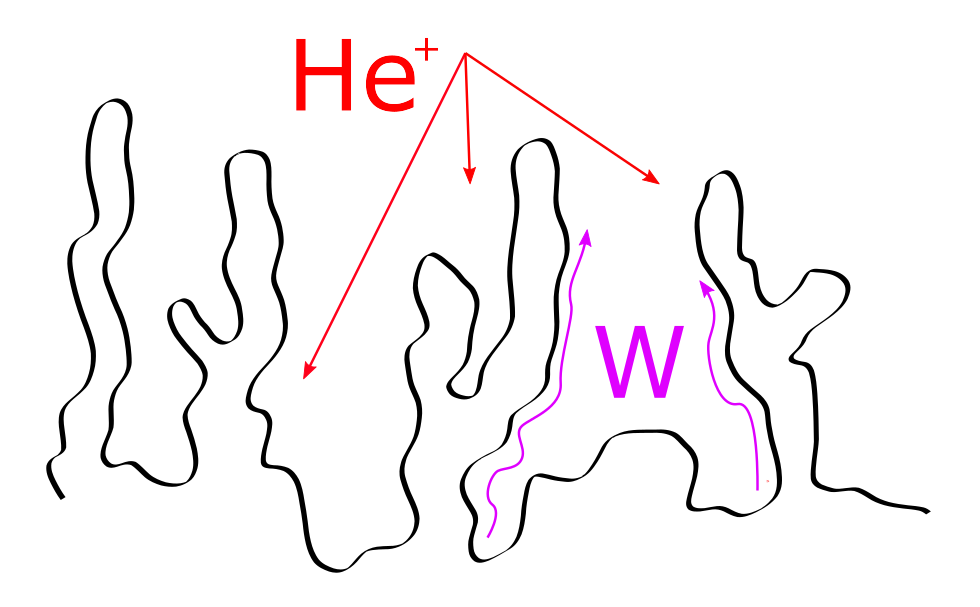It's a particular pleasure to introduce February's Paper of the Month, which has the highly unusual distinction of being sole-authored by one of our Part III undergraduate students, Jacob Wright, based on work done during his Part II Literature Survey supervised by Prof. Lindsay Greer. Many congratulations to Jacob for his vision and drive to get this published, and very nice to see elements of the courses taught in the Department of Materials Science & Metallurgy underpinning the work.
James, Ruth and Jason (as joint Heads of Department)
**********************************************************************
Nuclear fusion reactors such as ITER will use tungsten as a plasma-facing component. However, when exposed to high temperatures and ion irradiation during fusion, a 'fuzz' nanostructure begins to grow out of the tungsten surface, which could contaminate the plasma. Although the initial formation process is understood, there is debate over late-stage growth, such as the mechanisms of tungsten and helium motion and which process is rate-limiting. A better understanding of the mechanism is needed to improve plasma-facing tungsten components, and to produce porous tungsten catalysts based on this fuzz.
In this work, the proposed mechanisms for tungsten and helium motion are reviewed, and new model fitting used to attempt to determine which of these is rate-limiting. It is concluded that helium bubbles grow and rupture within the tungsten, likely due to ballistic penetration through the porous fuzz, whilst tungsten adatoms suprisingly diffuse upwards towards the tips of tendrils, providing new material.
Figure caption: Fuzz growth in fusion reactors depends on the movement of helium, from the plasma, and tungsten, from the bulk material, through the layer in opposite directions.
Wright, J.A.R., "A review of late-stage tungsten fuzz growth", Tungsten (2022).

